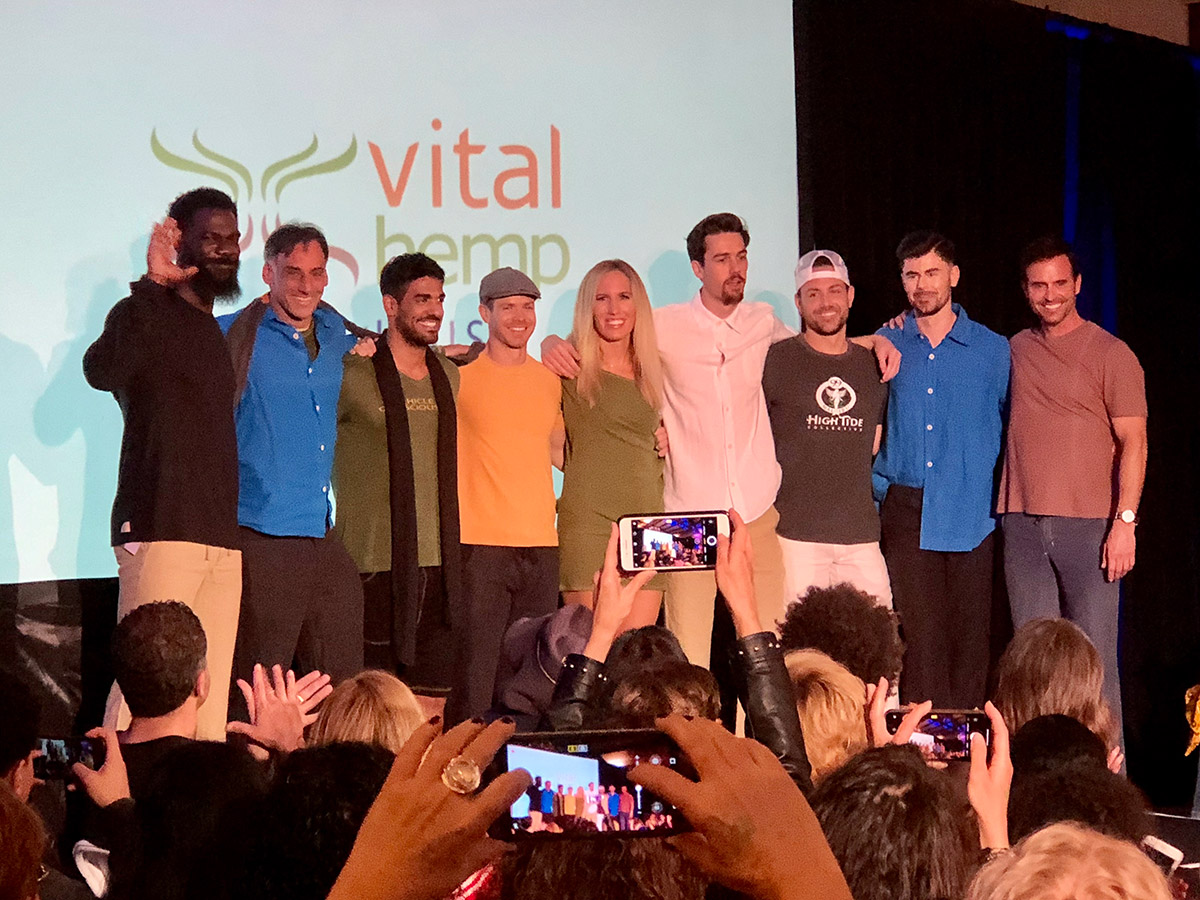
By Heather Collins
Cotton, silk, satin, and lace might be up against some strong competition in the next few years thanks to the growing use of sustainably produced hemp in textiles and fashion. Hemp, which is no stranger to the textile world, has actually been cultivated globally for centuries for fabric. In fact, according to the blog My Hemp Craft, hemp was a familiar and natural material used for rope during ancient Egyptian times and was also used as cloth for sails on ships throughout history, as it could weather storms crossing the seas (indeed, the word “canvas,” for the heavy cloth used in sail making, is derived from the word cannabis.)
Additionally, My Hemp Craft points out that while material evidence of hemp used in ancient times dates back only 9,000 years, pottery and metal objects with hemp rope-like impressions have been found at archaeological sites dating back as far as 26,000 BC. These findings suggest that our Paleolithic ancestors made use of the fibers of this versatile plant.
Sturdy and durable, hemp gained popularity in the United States when Presidents Washington and Jefferson both proudly grew hemp on their plantations. According to the blog THCINT.com/Hempology, it was once mandated that Americans were to grow hemp during the Colonial Era.
The hemp plant, when grown as a clothing material, grows significantly taller than other cannabis varieties, and it has noticeably longer fibers. The long fibers are what give hemp its strength when made into rope, clothing, bedding, or upholstery. Hemp fiber has been successfully made into shirts, handbags, shoes – you name it. It’s a strong cloth that is both appealing from an environmental and design standpoint, and hemp’s benefits outweigh other materials, such as cotton and polyester.
Research published by SEI indicates that cotton needs about 50% more water per season than hemp, which can grow with little irrigation. More than 70% of the global cotton harvest comes from irrigated land, which poses a risk for groundwater contamination. Hemp takes very little water and is strong enough to grow in fields without depleting natural resources.
According to Hempology, 42 hemp mills were built in the United States in 1941, primarily in the Midwest. Hemp was a popular commodity, and farmers were drawn to its appeal as a cash crop. Also, there was a sincere sense of patriotism by growing domestic plants versus buying hemp from abroad. Once the mills started production, hemp was revered as an innovative and cutting edge product. However, in 1944 the government shut down the hemp mills, citing lack of needs due to “war purposes.” Essentially, those farmers who were growing about a million acres of hemp suffered financial despair, as they were expecting to reap a significant profit thanks to hemp’s bounty. Ultimately, the farmers had nowhere to turn to manufacture their crops due to the government’s orders to shut down.
Hemp in Everyday Fashion
Today, Patagonia, Inc. and popular fashion brands are taking note of the benefits of hemp, as it is more absorbent, and easy to blend with other fibers in clothing. In fact, Patagonia created a mini-documentary highlighting the history of hemp and its potential power to create soft, light, and breathable fabric. Thanks to the passage of the U.S. Farm Bill in 2018, eco-fashion brands realize the regenerative agricultural potential hemp has in creating more jobs domestically and sourcing U.S.-grown hemp for their clothing lines.
Iconic U.S.-based blue jeans brand Levi Strauss has been experimenting with hemp fabric by combining it into its cotton jeans for several years and discussed its plans with the Business Insider. Product innovation teams at Levi’s indicate that they have been using hemp in blue jeans, but they still need time to truly ‘cottonize’ it and make it soft and appealing for everyone. With sustainability at its core, Levi’s developers acknowledge this process will take time to make hemp the softest, most durable textile that provides a good fit and a lasting pair of jeans.
Featured recently at a sustainable fashion runway show in Santa Monica, CA, Vital Hemp founder Ron Alcalay has long expounded the benefits of hemp fashion for everyday living. “Hemp’s come a long way and so has Vital Hemp,” he says on his website. “We intend to reintroduce people to the superior qualities of hemp by producing the most comfortable, healthy and sustainable hemp clothes possible. As vital members of the sustainable business community, we aspire to be a part of the groundswell…re-legalizing the cultivation of industrial hemp in the U.S.A. so that we can all benefit from the myriad uses of this amazing plant—for clothing, food, paper, fuel, and so much more.”
Even footwear is exploring the benefits of hemp with shoe designers ready to go the extra mile by utilizing hemp as its main fabric. Take it from year-old company DopeKicks, the first waterproof hemp tennis shoe. They believe their sustainable footwear is not only fashion-forward but also “the coolest, eco-friendly, super resistant and waterproof shoes accessible to everyone.”
After a long day, Jungmaven wants everyone to lay down in comfort to the soft, appealing cloud-like feel of hemp sheets, pillows, and blankets every night. The bedding brand uses sustainable hemp material to create luxurious products for a healthier future for the planet.
Interested in learning more about hemp’s journey into fashion? Be sure to join in on the fun for a hemp-centric Fashion Show at 7th Annual NoCo Hemp Expo, March 26-28, 2020, at the National Western Complex in Denver. Tickets are available at https://nocohempexpo.com/.
PHOTO: Compass Natural (photo of Vital Hemp fashion models on stage)
 # # #
# # #
Heather Collins is a seasoned Public Relations professional who works closely with Compass Natural Marketing on lifestyle and hemp brands. Additionally, Collins has operated h | c marketing and communications, an independent project-based firm that provides strategic insight to clients within the natural products industry, including national trade associations plus, renowned leading health and wellness experts.



